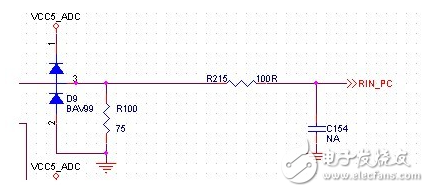1. The difference between AC coupling and DC recovery:
When DC coupling is performed, the actual signal to be measured is displayed on the screen. When AC coupling, the input signal is coupled through a capacitor, and then enters the oscilloscope's amplifier circuit. Due to the blocking effect of the capacitor, the DC component of the signal under test is filtered out. The oscilloscope displays only the AC component.
The difference between AC coupling and DC coupling on the matching circuit: DC coupling is a direct wire connection, including the connection through a linear component such as a resistor. It is suitable for use in an amplifying circuit for signals including a DC component. In a DC-coupled circuit, the static operating points of the various stages of the circuit are mutually influential. Level 1 work points change the adjacent second level and will also be affected. Therefore, the operating point current and voltage cannot be adjusted individually. In circuits where AC-coupled DC is not coupled, the circuits of each stage are isolated by capacitors or inductors. Therefore, the static working point is independent, and it is easier to adjust the static working point. In DC coupling, since the input and output impedances of each stage are constant, impedance transformation is not good, and high-efficiency matching is difficult to achieve in direct coupling. In the AC-coupled circuit, the line-to-line transformer is used to perform impedance transformation well to achieve high-efficiency matching. In particular, the LC resonant circuit commonly used in the frequency selective amplifying circuit greatly improves the efficiency of the circuit.
2. AC coupling (AC COUPLED) is a coupling that is completed by connecting capacitors in series. The type of capacitor is not limited. The function of AC coupling is to remove the DC component inside the signal. It has no special effect on the pure AC signal (without any DC component), and for the DC signal it removes the DC component, which is characteristic of the capacitor charging stability.
After AC coupling, you must recover your known DC component, which requires the use of CLAMP and DC RESTORATION. With regard to the clamp, it is to superimpose a DC level base point on a certain range of AC power such as a video signal, so that the amplitude range of the AC power changes from one range to another range, such as 1-2V jump to 4-5V, so that The conditions for meeting input and output requirements. The commonly used clamping method is BAV99, or two diodes connected to each other are connected to voltage and ground respectively. As shown below:

BAV99 is connected as above, and actually stabilizes the voltage on the signal line between -0.7V and 5.7V.
A manual pulse generator (MPG) is a device normally associated with computer numerically controlled machinery or other devices involved in positioning. It usually consists of a rotating knob that generates electrical pulses that are sent to an equipment controller. The controller will then move the piece of equipment a predetermined distance for each pulse.
The CNC handheld controller MPG Pendant with x1, x10, x100 selectable. It is equipped with our popular machined MPG unit, 4,5,6 axis and scale selector, emergency stop and reset button.
Manual Pulse Generator,Handwheel MPG CNC,Electric Pulse Generator,Signal Pulse Generator
Jilin Lander Intelligent Technology Co., Ltd , https://www.jllandertech.com